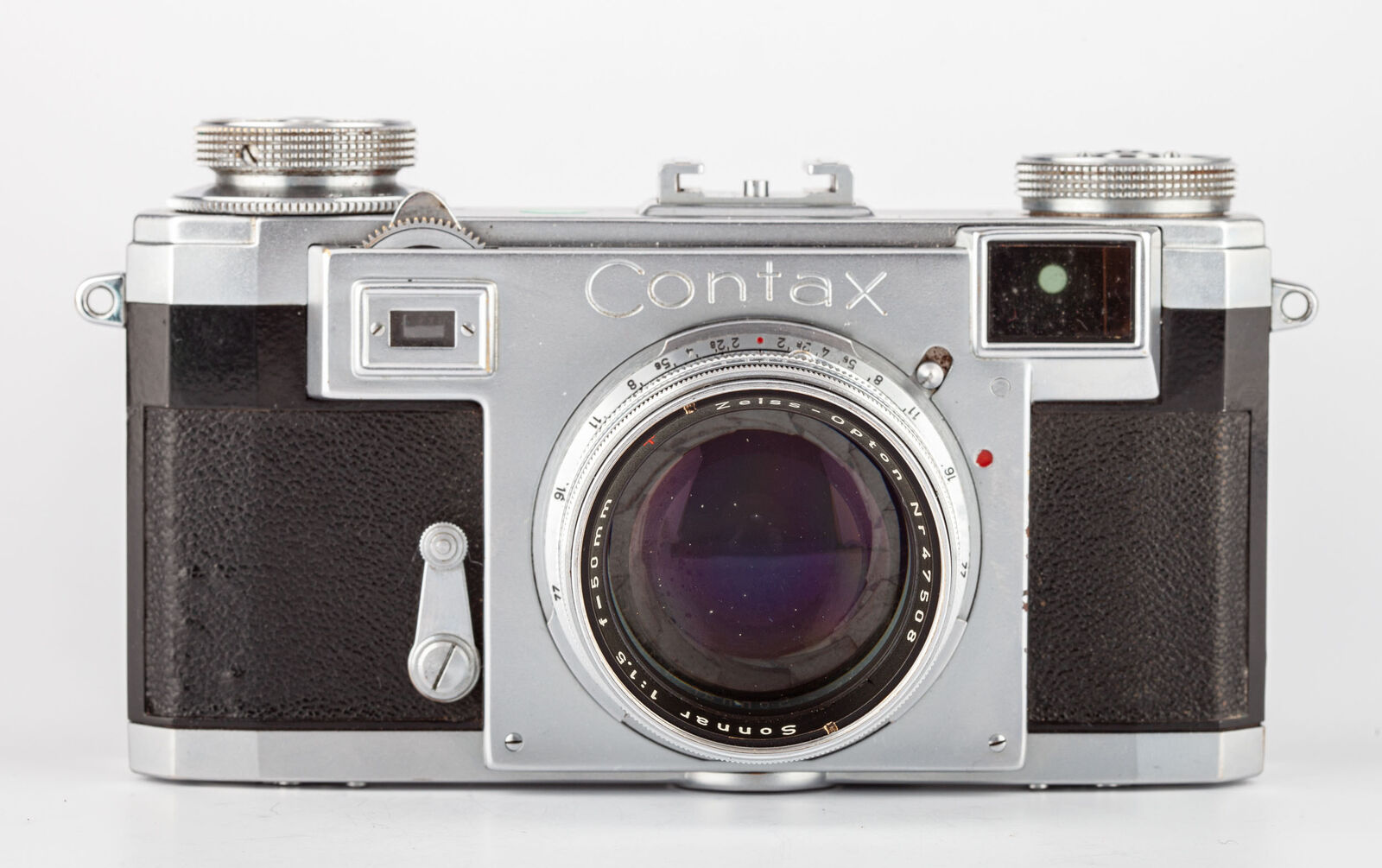There’s more to the Contax brand than the insanely expensive cult compacts T2 and T3, as these cameras surely prove.
A good portion of film photographers today must be familiar with Contax through the insanely expensive and popular Contax T2 and T3 compact cameras. However, there’s more to the historic camera model-turned-brand that hails all the way back to 1932 Dresden. Whether you’re interested in scoring a more reasonably priced Contax or simply want to familiarize yourself with the other noteworthy models, we think this list will be of great use to you.
Before we get to our recommendations, allow us to give you a quick primer about the iconic brand. Initially a rangefinder camera model by Zeiss Ikon of Dresden, the original Contax was introduced in 1932 as a competitor of the Leica models. Camerapedia also tells us it actually featured several technological advantages compared to the Leica. These include better focusing due to longer effective rangefinder triangulation base, a bayonet lens mount and removable back for film loading, and a vertical-travel, articulated metal shutter that allowed a faster maximum speed (1/500 sec then 1/1000 sec soon after). It was later named Contax I with the introduction of succeeding models.
Contax II
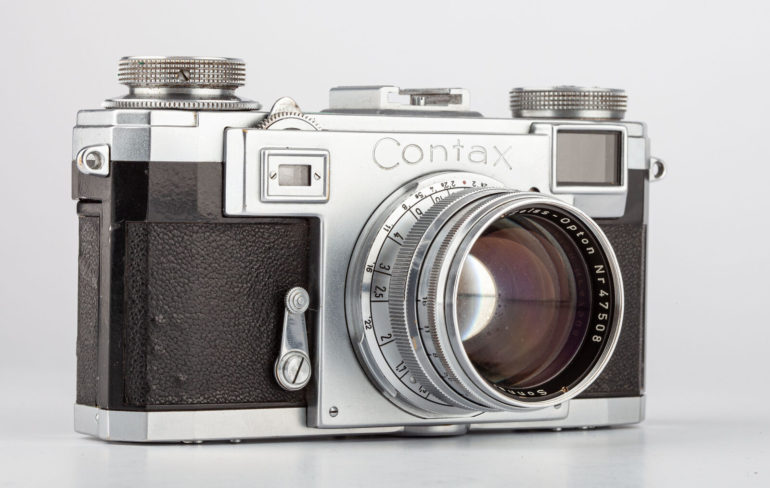
The Contax I was technically a work in progress until the release of the II and III models in 1936. The only difference was the integrated exposure meter on the latter releases. According to Wikipedia, they was the first cameras to have a combined eyepiece for both viewfinder and rangefinder. Other features include shutter speed and film wind knob moved to the top plate, fastest shutter speed at 1/1250 sec, and chrome plated finish (instead of the black enamel finish of the original model). The two models eventually became very popular with professional photographers, especially photojournalists who required workhorse cameras that allowed outstanding available-light performance with the help of large-aperture lenses like the 50mm f1.5 Sonnar. The most notable of these photographers was Robert Capa, who used two Contax II cameras with 50mm lenses to shoot the widely-celebrated The Magnificent Eleven D-Day photos.
Buy Now: eBay
Contax S
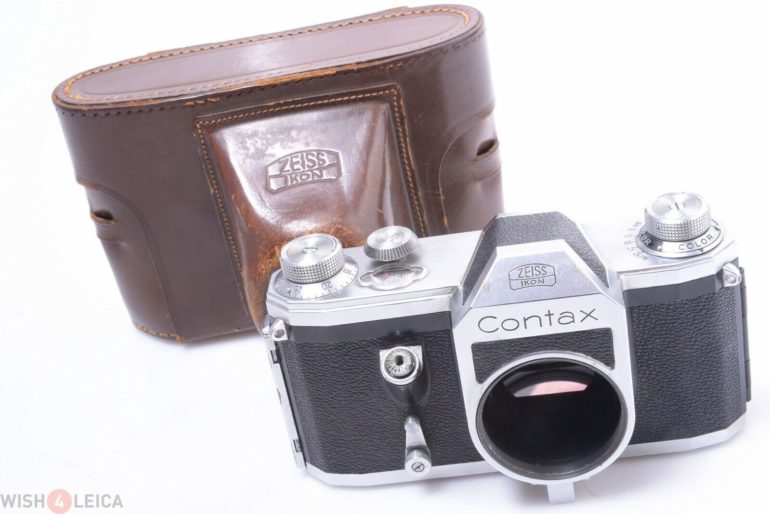
In 1949, Zeiss Ikon introduced the Contax S (Spiegelreflex) which, Wikipedia tells us, is the second 35mm SLR camera in the world to have a pentaprism for eye-level viewfinder viewing. This innovative camera also featured a simple cloth focal-plane shutter and M42 lens mount (which inevitably became an industry standard), and a sync contact in the tripod socket at the camera base. It was replaced by the Contax D in 1952, four years after the separation of the East and West branches of Zeiss Ikon. According to pentaconsix.com, the Western branch sought legal action to prevent the Eastern branch in Dresden from using the Contax name in their cameras. Because of this, they added a small capital letter D under the Zeiss Ikon logo for the Contax S and adopted the name Pentacon (Pentaprism Contax) for the export version of the Contax D.
Buy Now: eBay
Contax RTS
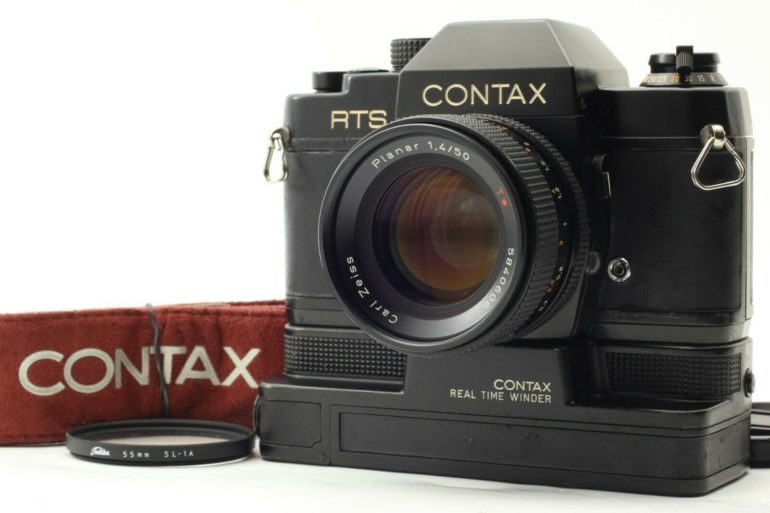
In 1975, the Contax RTS was manufactured by Yashica, two years after the Japanese manufacturer got the license to create a premium range of 35mm SLR cameras for Zeiss lenses. According to Camerapedia, by the early 1970s, Zeiss Ikon cameras were no longer being produced, but the German company still wanted to build a high-quality system that used Zeiss lenses. The result of this partnership (called Top Secret Project 130) was a new, professional SLR camera with an electronically-controlled, horizontal focal plane shutter and a new line of premium lenses to go along with it. Dubbed the RTS (“Real Time System”), it was introduced in Photokina in 1974 where it was warmly received. The Porsche-designed camera boasted a top shutter speed of 1/2000 sec, B mode, interchangeable focus screens, and compatibility with professional accessories like power winders, motor drives, and infrared and radio-controlled remote releases.
Buy Now: eBay
Contax AX
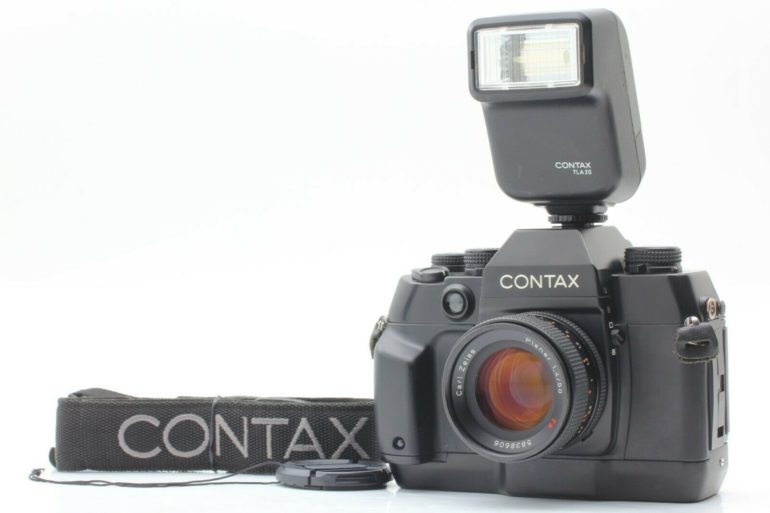
Introduced in 1996, the Contax AX was equipped with a unique autofocus system for manual focus lenses using a moving film plane inside the camera. According to Wikipedia, this design gave the camera a macro mode that worked a lot like an integrated 10mm extension tube. This means it could achieve a magnification ratio over 1:1 without the aid of extension tubes or bellows. Kyocera also made a special adapter that enabled Hasselblad V-series lenses to be used on all Contax C/Y mount cameras. This allowed the AX to use the autofocus of Hasselblad V-series lenses.
Buy Now: eBay
Cover photo from the eBay listing by shphoto-gmbh


